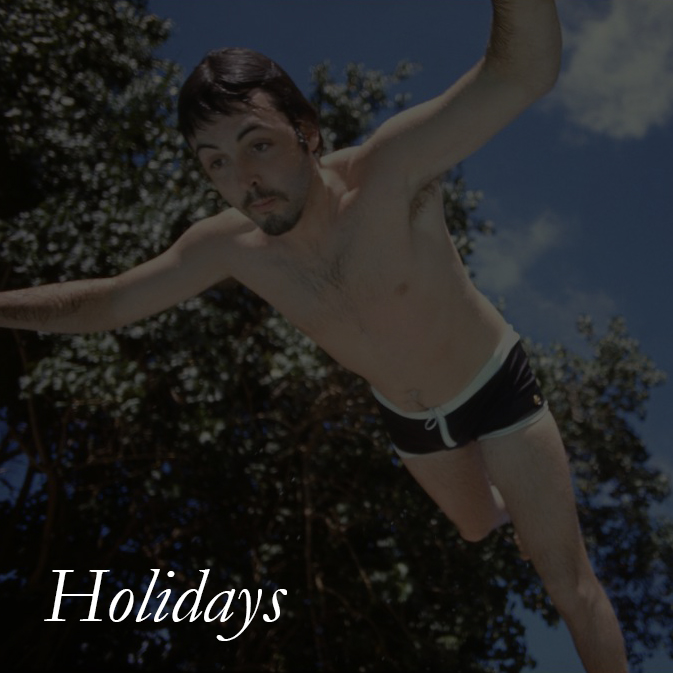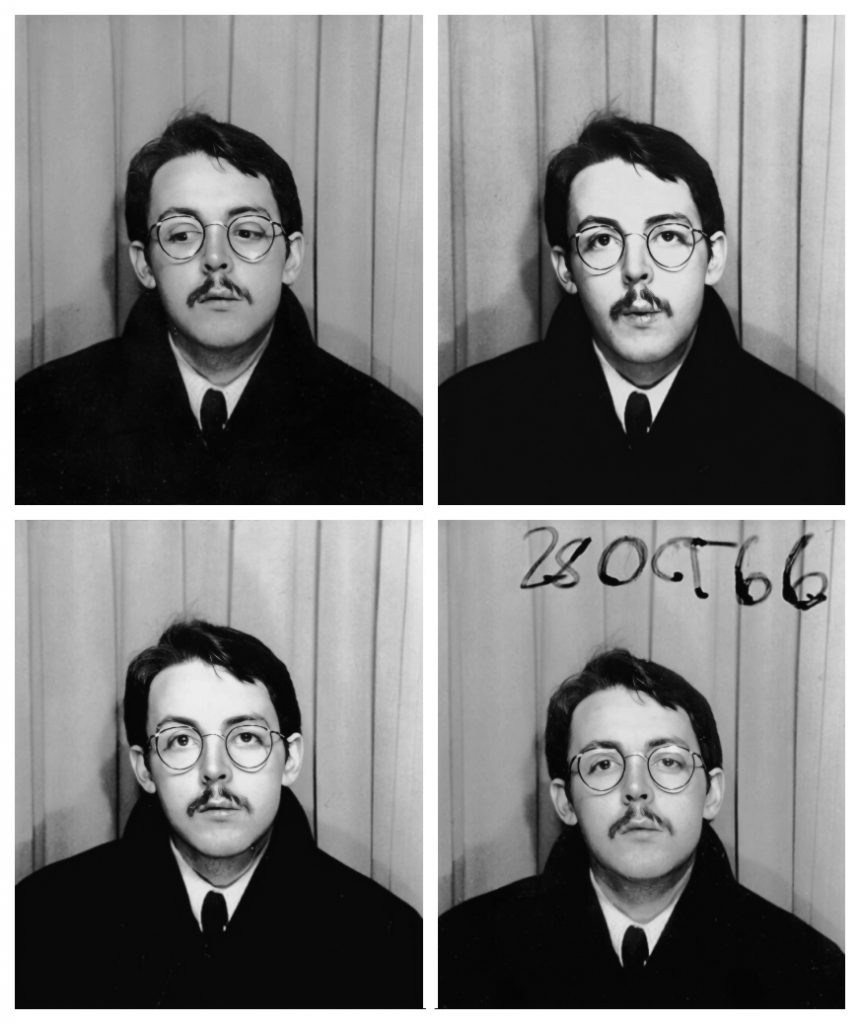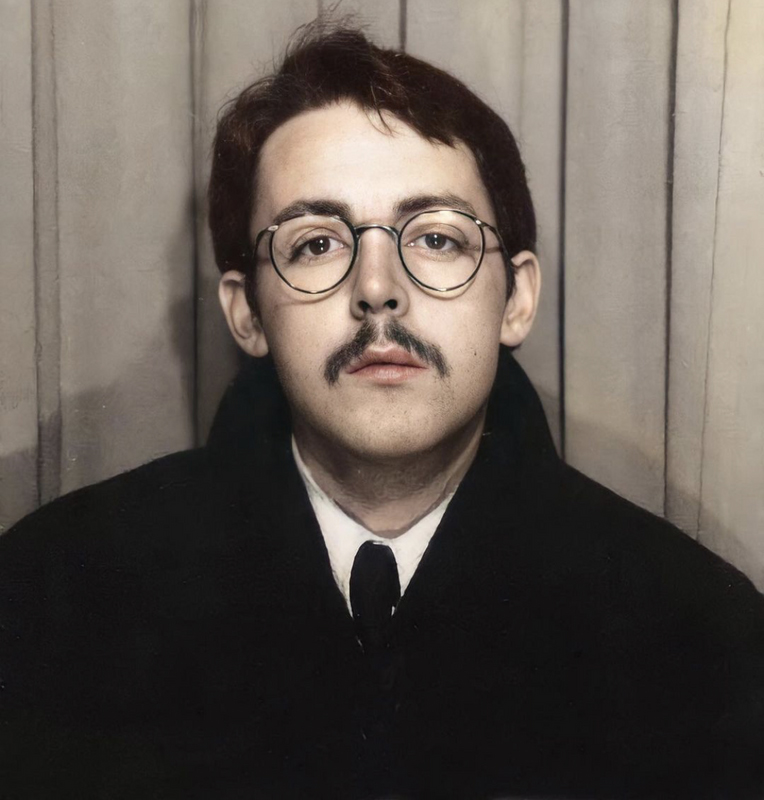
November 06-12, 1966
A French road trip for Paul McCartney
Last updated on November 24, 2023

November 06-12, 1966
Last updated on November 24, 2023
Location: Bordeaux, France
Interview November 1966 • The Beatles interview for The Beatles Monthly Book
Article Nov 05, 1966 • Brian Epstein turns down request for a benefit TV show with The Beatles
Article November 06-12, 1966 • A French road trip for Paul McCartney
Session Nov 07, 1966 • Remixing "I Want To Hold Your Hand"
Session Nov 08, 1966 • Remixing "She Loves You"
Next article November 12-14, 1966 • Paul McCartney meets Mal Evans and travels to Spain
November 06-12, 1966 • A French road trip for Paul McCartney
November 12-14, 1966 • Paul McCartney meets Mal Evans and travels to Spain
November 14-19, 1966 • Paul McCartney on holiday in Kenya
Nov 19, 1966 • Paul McCartney's vision for "Sgt. Pepper's Lonely Hearts Club Band"
In November 1966, Paul McCartney decided to take a driving holiday in France. Eager to escape the constant attention of Beatles fans, he wore a disguise consisting of glasses and a fake mustache, created by Wig Creations, the film cosmetic company used by The Beatles on their film “A Hard Day’s Night.” However, he chose to drive his brand new dark green Aston Martin DB5, a surefire attention grabber.
On November 6, Paul flew to France on a plane ferry with his Aston Martin from Lydd Airport in Kent, England.
Then you went and did your passports and they just drove your car off like a big posh hotel. It was great seeing your car come out, and also I was pretty proud of the car. It was a great motor for a young guy to have, pretty impressive.
Paul McCartney – From “Paul McCartney: Many Years from Now” by Barry Miles, 1997
Paul drove to Paris, then down to Bordeaux, where he planned to meet his roadie, Mal Evans, on November 12. He brought a camera and created experimental movies that were later lost when fans broke into his Cavendish home and stole them.
Arriving in Bordeaux on the 11th, Paul went to a discotheque but was refused admission because of his disguise. He decided to drop it and return as a Beatle.
On November 12, Paul and Mal continued the trip towards Spain.
They measure you and match the colour of your hair, so it was like a genuine moustache with real glue. And I had a couple of pairs of glasses made with clear lenses, which just made me look a bit different. I put a long blue overcoat on and slicked my hair back with Vaseline and just wandered around and of course nobody recognised me at all. It was good, it was quite liberating for me.
Paul McCartney – From “Paul McCartney: Many Years from Now” by Barry Miles, 1997
It was an echo of the trip John and I made to Paris for his twenty-first birthday, really. I’d cruise, find a hotel and park. I parked away from the hotel and walked to the hotel. I would sit up in my room and write my journal, or take a little bit of movie film. I’d walk around the town and then in the evening go down to dinner, sit on my own at the table, at the height of all this Beatle thing, to ease the pressure, to balance the high-key pressure. Having a holiday and also not be recognised. And re-taste anonymity. Just sit on my own and think all sorts of artistic thoughts like, I’m on my own here, I could be writing a novel, easily. What about these characters here in this room?
Paul McCartney – From “Paul McCartney: Many Years from Now” by Barry Miles, 1997
Kodak 8 mm was the one, because it came on a reel. Once it became Super-8 on a cartridge you couldn’t do anything with it, you couldn’t control it. I liked to reverse things. I liked to reverse music and I found that you could send a film through the camera backwards. Those very early cameras were great.
If you take a film and run it through a camera once, then you rewind it and run it through again, you get two images, superimposed. But they’re very washed out, so I developed this technique where I ran it through once at night and only photographed points of light, like very bright reds, and that would be all that would be on the first pass of the film. It would be like on black velvet, red, very red. I used to do it in my car so it was car headlights and neon signs, the green of a go sign, the red of a stop, the amber
The next day, when it was daylight, I would go and shoot and I had this film that was a combination of these little points of light that were on a ‘black velvet’ background and daylight. My favourite was a sequence of a leaning cross in a cemetery. I turned my head and zoomed in on it, so it opened just with a cross, bingo, then as I zoomed back out, you could see the horizon was tilted at a crazy angle. And as I did it, I straightened up. That was the opening shot, then I cut to an old lady, facing away from me, tending the graves. A fat old French peasant who had stockings halfway down her legs and was revealing a lot of her knickers, turning away, so it was a bit funny or a bit gross maybe. She was just tending a grave so, I mean, I didn’t need to judge it. I just filmed it. So the beautiful thing that happened was from the previous night’s filming. There she is tending a grave and you just see a point of red light appear in between her legs and it just drifts very slowly like a little fart, or a little spirit or something, in the graves. And then these other lights just start to trickle around, and it’s like Disney, it’s like animation!
One thing I’d learned was that the best thing was to hold one shot. I was a fan of the Andy Warhol idea, not so much of his films but I liked the cheekiness of Empire, the film of the Empire State Building, I liked the nothingness of it. So I would do a bit of that.
There were some sequences I loved: there was a Ferris wheel going round, but you couldn’t quite tell what it was. And I was looking out of the hotel window in one French city and there was a gendarme on traffic duty. There was lot of traffic coming this way, then he’d stop ’em, and let them all go. So the action for ten minutes was a gendarme directing the traffic: lots of gestures and getting annoyed. He was a great character, this guy. I ran it all back and filmed all the cars again, it had been raining so there was quite low light in the street. So in the film he was stopping cars but they were just going through his body like ghosts. It was quite funny. Later, as the soundtrack I had Albert Ayler playing the ‘Marseillaise’. It was a great little movie but I don’t know what happened to it.
Paul McCartney – From “Paul McCartney: Many Years from Now” by Barry Miles, 1997
I did a film, that I wish I had now. I filmed a gendarme on traffic duty in Paris and he was just stopping all the cars, so that was one roll through. It was a Bolex camera and you could rewind so you could then go through again. The second time, he’d gone, so I just filmed all the traffic. It looked like this impossible job where the traffic was just going through him all the time.
Paul McCartney – 2012 interview – From “Revolver (2022)” book – It’s not clear if Paul makes reference to this trip to Paris, or an earlier one in 1966. The reference to the Bolex camera is at odd with the reference to the Kodak 8 mm in “Paul McCartney: Many Years from Now” by Barry Miles
I looked like old jerko. ‘No, no, monsieur, non’ – you schmuck, we can’t let you in! So I thought, Sod this, I might as well go back to the hotel and come as him! So I came back as a normal Beatle, and was welcomed in with open arms. I thought, Well, it doesn’t matter if I’ve blown my cover because I’m going to meet Mal anyway, I don’t have to keep the disguise any longer. Actually, by the time of the club I’d sort of had enough of it. Which was good. It was kind of therapeutic but I’d had enough. It was nice because I remembered what it was like to not be famous and it wasn’t necessarily any better than being famous.
It made me remember why we all wanted to get famous; to get that thing. Of course, those of us in the Beatles have often thought that, because we wished for this great fame, and then it comes true but it brings with it all these great business pressures or the problems of fame, the problems of money, et cetera. And I just had to check whether I wanted to go back, and I ended up thinking, No, all in all, I’m quite happy with this lot.
Paul McCartney – From “Paul McCartney: Many Years from Now” by Barry Miles, 1997
Incidentally, November 6, 1966, when Paul left London for France, is the date that conspiracy theorists claim Paul died and was later replaced by lookalike musician William Shears Campbell (Billy Shears), who had recently won a Paul McCartney lookalike competition. They cite the lack of photographs from the trip (although there is homemade movie footage of Paul in Kenya) and the scarcity of sightings in Britain from this date until the start of the Sgt. Pepper sessions on November 24, by which time Paul has facial hair (because it’s really Billy Shears pretending to be Paul).
From “Beatles ’66: The Revolutionary Year” by Steve Turner



The Beatles Diary Volume 1: The Beatles Years
"With greatly expanded text, this is the most revealing and frank personal 30-year chronicle of the group ever written. Insider Barry Miles covers the Beatles story from childhood to the break-up of the group."
We owe a lot to Barry Miles for the creation of those pages, but you really have to buy this book to get all the details - a day to day chronology of what happened to the four Beatles during the Beatles years!
If we modestly consider the Paul McCartney Project to be the premier online resource for all things Paul McCartney, it is undeniable that The Beatles Bible stands as the definitive online site dedicated to the Beatles. While there is some overlap in content between the two sites, they differ significantly in their approach.

Notice any inaccuracies on this page? Have additional insights or ideas for new content? Or just want to share your thoughts? We value your feedback! Please use the form below to get in touch with us.